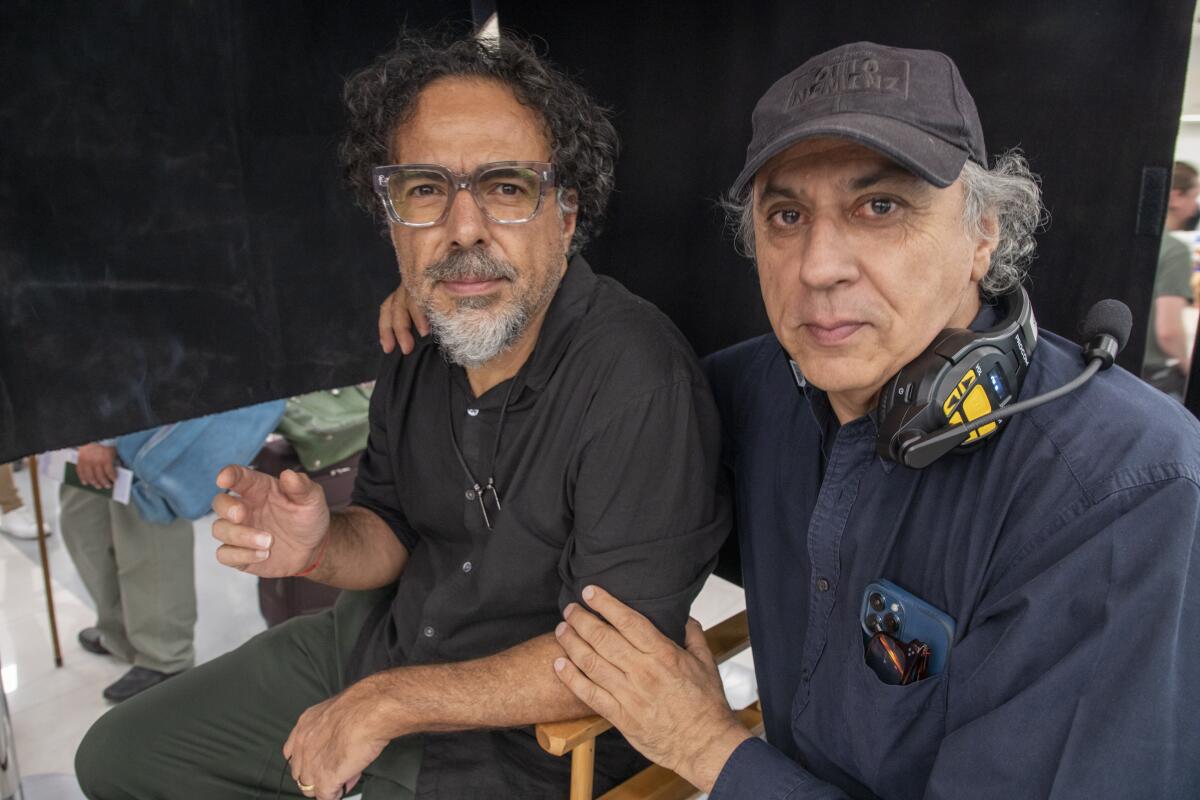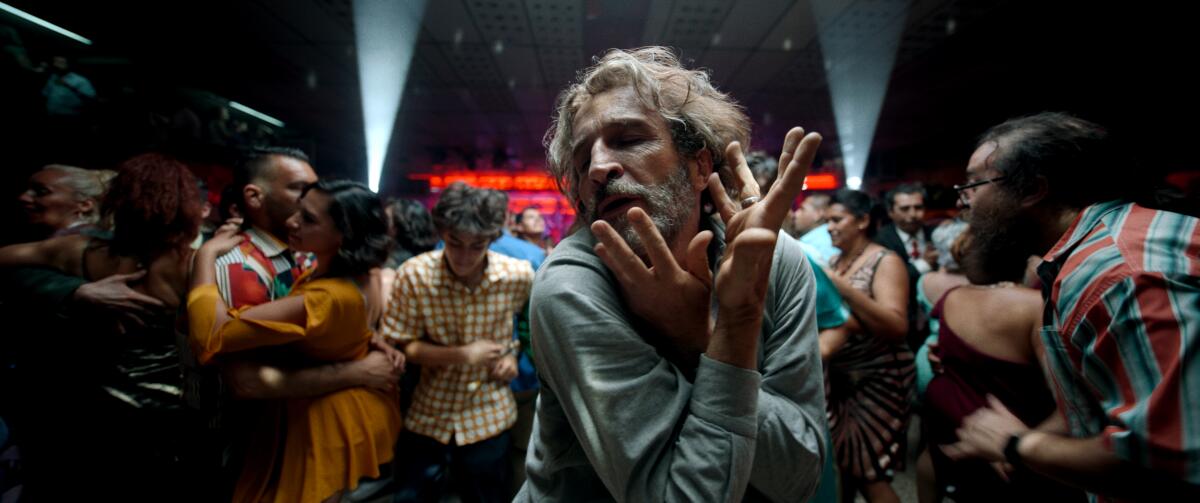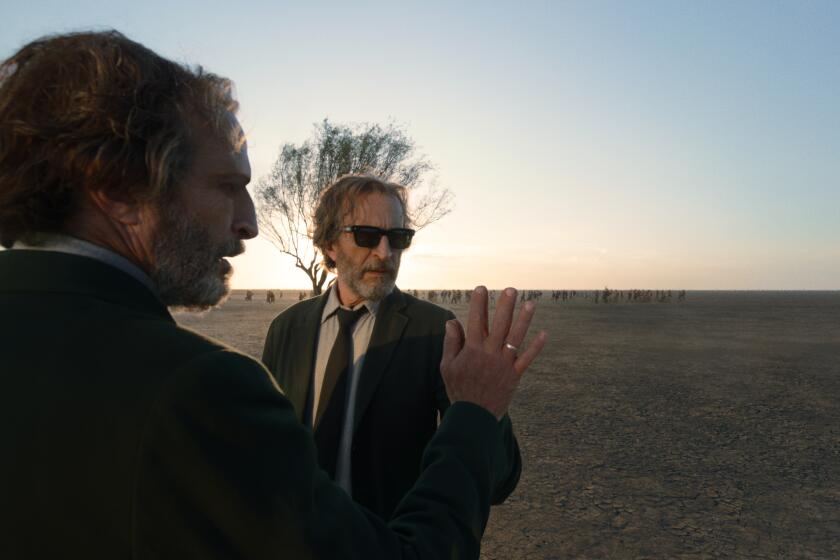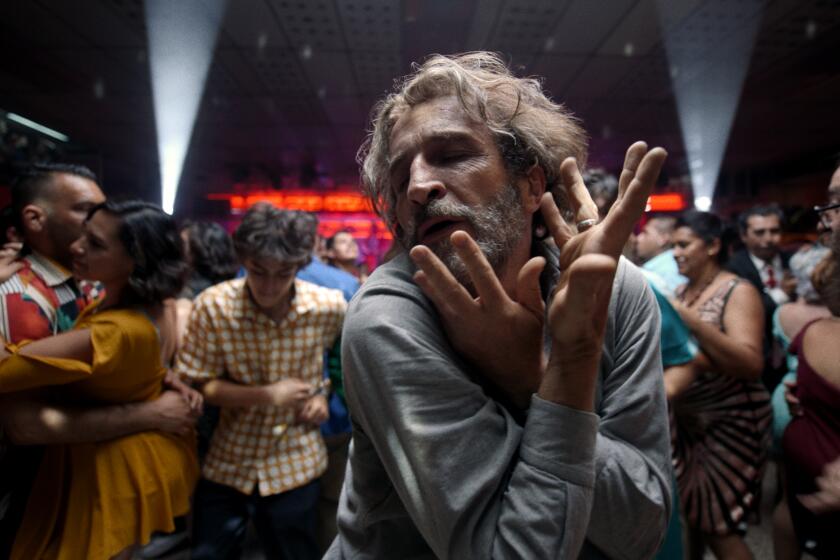‘Bardo’ cinematographer Darius Khondji: Will work for artistic attraction

- Share via
Darius Khondji may have the most distinguished résumé of any working cinematographer. His filmography includes collaborations with a who’s who of elite international auteurs, including David Fincher, Wong Kar-wai, Wes Anderson, Bong Joon Ho and Paul Thomas Anderson.
Yet his recent Academy Award nomination for his work on Alejandro G. Iñárritu’s sweeping autobiographical drama, “Bardo, False Chronicle of a Handful of Truths,” represents the Iranian French cinematographer’s first Oscar nod (and his second overall) since he was recognized for “Evita” in 1996.
Speaking by phone from his home in Paris, Khondji says the epic, hallucinatory “Bardo” represented a deeply satisfying dream project, despite a technically challenging shoot where “there was never a moment of boredom.”
Where were you when you found out about the Oscar nomination?
I was having lunch with my wife, and a Korean producer texted me congratulations. I said to my wife, “Oh, he’s very sweet, but he’s a bit late.” It was two weeks after the [American Society of Cinematographers] nomination. I didn’t know it was the day of the Oscar nominations. And then two minutes later, I had about 25 text messages and two calls. It was wonderful. I’m very grateful.
The film tackles the immigrant experience but also traipses into moments from the director’s personal history, Mexican history and dreamlike combinations of the two.
How did you first connect with Alejandro G. Iñárritu?
Alfonso Cuarón sent me a message and asked, “Can I give my friend Alejandro your number?” I’m a big fan of Alejandro’s movies, so I said, “Of course.”
It started with a conversation over the phone, and Alejandro was very articulate about what he wanted to do, and very personal; it spoke to me very deeply. So I had already decided, you know, I should do this movie. I should travel from Europe to Mexico during the worst days of COVID, pre-vaccine and everything. Then we had another phone call, and he realized that he hadn’t sent me the script yet!
Once I got the script, it was like a voyage through time. It was like an opening to a magnificent book. So I jumped on a plane and flew to Mexico City, and we met on location right away, took many long walks together and started prepping this movie.
This shoot must have required such precision and planning, but the film itself feels loose and fluid. Was that by design?
It was very precise. We had to be precise because we had many extras. And because of the light — certain moments of the film needed to be shot at a very specific time of day, for the feel of it. Everything was highly choreographed in advance. But the great thing with Alejandro is that there’s so much preparation, and then on the day when we actually shoot, it really takes on a life of its own.
Things often don’t happen exactly the way you think they would. And we would modify things constantly [to make it] better for the story. Alejandro is full of life, and he directs with precision and willpower.

You chose to shoot on the Alexa 65-millimeter camera, using special wide lenses that were designed for the film. What did that enable you to do here?
I love this camera. It’s like a paintbrush. It’s a VistaVision camera, basically. You can easily blow it up to Imax-size. And the relationship with the lens is just different. It has the feeling, the excitement of anamorphic, but you can make it any format you want.
Alejandro and I basically focused on the character of Silverio (Daniel Giménez Cacho) and then wrapped Mexico around him like a wallpaper. We wanted to do very fluid shots, and that’s why it had to be well-choreographed ahead of time. Going from one scene to another had to feel like one movement, like a symphony.
This film is full of people, with what looks like thousands of extras in certain scenes. How did you navigate the camera movements in the dance sequence, for example?
It was hundreds and hundreds of extras. We didn’t digitally enhance, because Alejandro wants to have the real people. The costume designer had to design costumes for each of them, and the production designer had to do amazing work to support all the colors.
Trimmed by about 24 minutes, the Oscar-winning director’s surreal semi-autobiographical fantasia, starring Daniel Giménez Cacho, is worth wrestling with anew.
For the choreography of the camera, we wanted it to feel like one movement. It was a mixture of a technocrane and a Steadicam, with a special tool on it called a Trinity. We put an Alexa 65-millimeter on the Trinity, which makes it very heavy. Every shot was a long, continuous shot, moving around Silverio. And we were constantly dimming the lights and changing the feeling of the light around him.
You’ve worked with so many of our greatest directors. How do you know when a filmmaker will be the right partner to work with?
Every time it’s a different story and it’s very magical. Part of it is luck. The common denominator is that I need to be excited by the director. There are different kinds of attraction in life, and with these directors I feel an artistic attraction to their work.
I’ve also learned that you can only help certain directors and certain projects. You have to be very careful, to know that you can do the film the way it should be done.
More to Read
Sign up for The Envelope
Get exclusive awards season news, in-depth interviews and columnist Glenn Whipp’s must-read analysis straight to your inbox.
You may occasionally receive promotional content from the Los Angeles Times.









